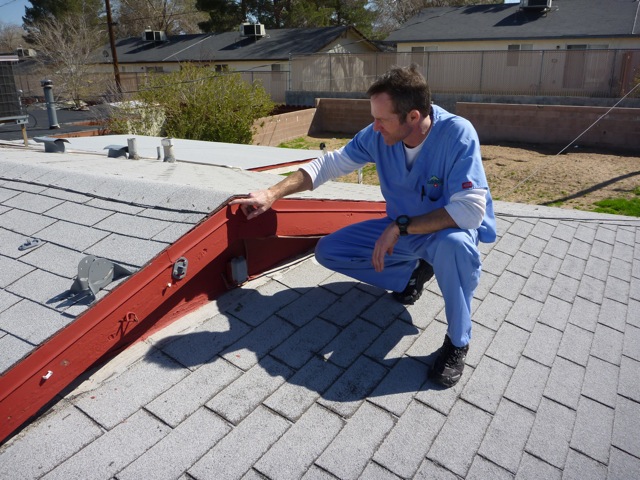Choosing the Right Roofing Material

When it comes to protecting your home, choosing the right roofing material is essential. Your roof acts as the first line of defense against the elements, including extreme weather conditions. One important factor to consider when selecting roofing materials is your climate. Different regions experience varying weather patterns, such as temperature fluctuations, rainfall levels, humidity, and wind speeds. In this blog post, we will explore the various types of roofing materials available and discuss how to match them with the specific needs of your climate.
Understanding Climate Considerations (200 words): Before delving into the specifics of roofing materials, it’s crucial to understand how climate affects your roof. In hot climates, where temperatures can soar, you’ll need roofing materials that can reflect sunlight and dissipate heat effectively. Conversely, in colder climates, insulation and the ability to withstand snow loads become paramount. Rainy climates necessitate roofing materials that provide superior water resistance and prevent leaks. Additionally, wind-prone areas require materials with exceptional wind resistance to withstand gusts and prevent damage.
Types of Roofing Materials
- Asphalt Shingles: Asphalt shingles are a popular choice due to their affordability and versatility. They perform well in various climates, with certain types designed specifically for regions with higher temperatures or increased moisture. However, they may have a shorter lifespan in areas prone to extreme temperature fluctuations.
- Metal Roofing: Metal roofs offer durability, longevity, and excellent performance in both hot and cold climates. They can reflect sunlight, reduce heat absorption, and are highly resistant to wind damage. In colder climates, metal roofs shed snow effectively, preventing heavy snow loads from accumulating.
- Clay or Concrete Tiles: These roofing materials are known for their durability and ability to withstand extreme temperatures. They are well-suited for hot and sunny climates, as they can reflect sunlight and provide excellent insulation. However, they may be more susceptible to breakage in regions with significant temperature variations or hailstorms.
- Slate Roofing: Slate roofs are renowned for their elegance and longevity. They offer excellent durability in cold climates, with the ability to withstand heavy snow loads. However, they may not be as suitable for regions with frequent temperature fluctuations, as the freeze-thaw cycle can cause cracking.
- Wood Shakes: Wood shakes provide a natural and rustic aesthetic to homes. They perform well in moderate climates, offering good insulation properties. However, they may not be ideal for areas with high humidity or a high risk of wildfires, as they require regular maintenance and are more prone to rot and fire damage.
- Synthetic Roofing Materials: Synthetic materials such as composite shingles or rubber tiles can mimic the appearance of traditional roofing materials while offering increased durability and resistance to various climates. They are often a viable alternative to natural materials.

Matching Materials with Climate
To choose the right roofing material for your climate, consider the following factors:
Temperature: Determine if your climate experiences extreme heat or cold and select materials that can withstand these conditions effectively. Reflective materials work well in hot climates while insulating materials are suitable for colder regions.
Moisture: If your area receives heavy rainfall, opt for materials with excellent water resistance to prevent leaks. Materials that dry quickly are also beneficial in humid climates to inhibit mold and mildew growth.
Wind: Wind-resistant materials are essential in regions prone to hurricanes, tornadoes, or strong gusts. Look for roofing materials with high wind ratings to ensure they can withstand severe weather conditions.
Snow: If your area experiences heavy snowfall, choose materials that can handle the weight and shed snow effectively. Steeper roof pitches and materials like metal or slate are often recommended for snowy climates.
Environmental Factors: Consider any environmental factors specific to your area. For example, if you live in a region prone to wildfires, it’s crucial to choose roofing materials with high fire resistance to protect your home. Visit Roofing Fascia if you need more information or have any questions.
Conclusion
Choosing the right roofing material for your climate is vital to ensure the long-term durability and performance of your roof. By considering factors such as temperature, moisture, wind, snow, and environmental conditions, you can make an informed decision that will enhance the resilience and efficiency of your home. Consult with roofing professionals who have expertise in your specific climate to gather valuable insights and recommendations. Remember, investing in the right roofing material now will provide you with peace of mind and protect your home from the elements for years to come.

